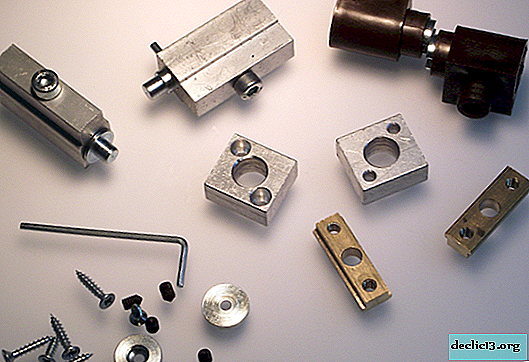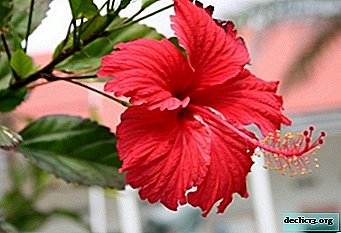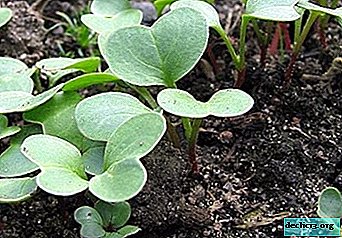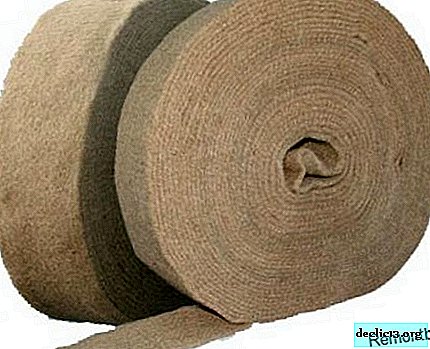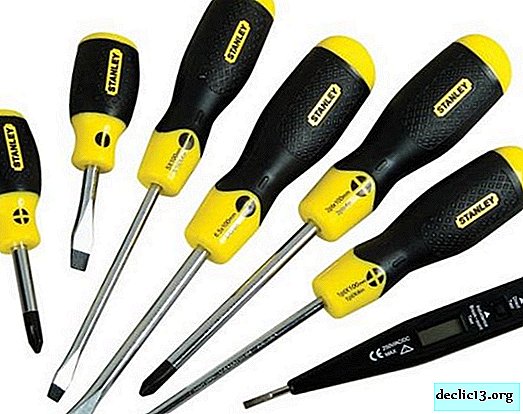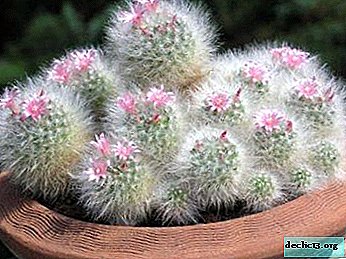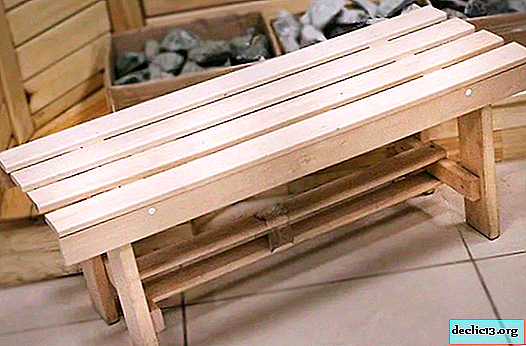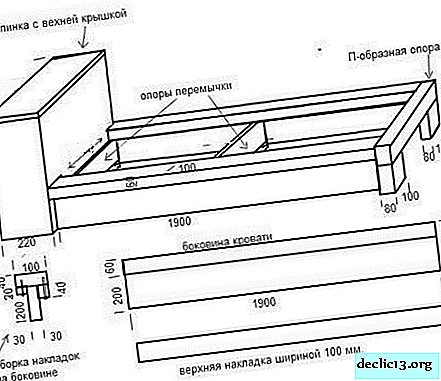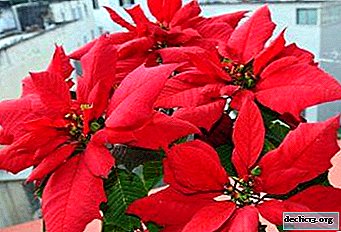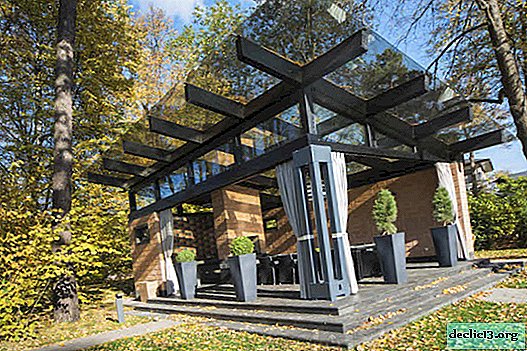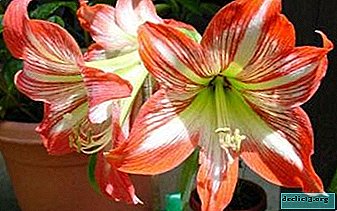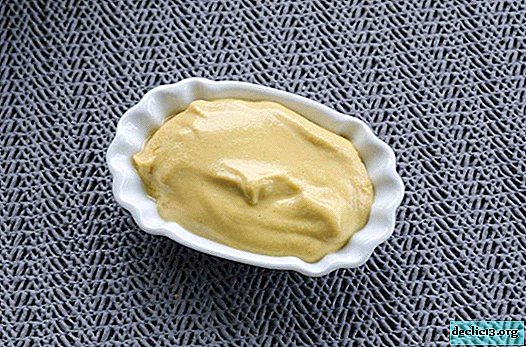Varietal varieties of pink pelargonium: which of them require your attention?
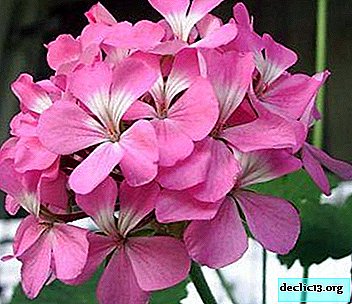
Pink pelargonium varieties stand out among the abundance of other bright colors with a delicate "girlish" shade and delicate aroma.
Among them there are large lush inflorescences of zonal species, carved leaves of ivy pelargonium and fragrant species that produce essential oils.
In our article we will talk about the Botanical description, the origin and price of the plant, we will tell you how to care for the flower, consider the instructions for planting pink pelargonium, and also learn about the features of its reproduction.
Let's talk about pests that can destroy pink pelargonium and how to take it off.
Botanical description, origin and price
The main difference between pelargonium is the unusual shape of the flower, whose petals have only a longitudinal axis of symmetry. The two upper petals are located separately and often fuse together. The remaining three lower petals are evenly spaced relative to each other. In nature, flowers are simple, but hybrids have flowers of varying degrees of terry and shape. For example, tulip-like, cloves or rose-like, similar to smaller copies of tulips, roses and carnations. Flowers are gathered together in the form of lush umbrella inflorescences.
The shape of the leaves of pelargonium is usually ivy or rounded with a serrated edge. Less common are species with dissected, fern-like leaves. The color of the leaves is not only monophonic, but also two-, three-color.
The vast majority of pelargonium species come from the Cape Province of South Africa. An interesting story is the entry of the first types of pelargonium into Europe. The fact is that in the XVII century Cape of Good Hope in South Africa, served as a transshipment point on the way to India. The Dutch doctors who accompanied the crew, on duty, were versed in botany and brought unusual tropical plants to their homeland. And already from the Netherlands, pelargoniums spread to all the rich houses of Europe.
Most often, pelargonium in garden stores can be purchased:
- In the form of seeds (sachet no more than 100 rubles).
- Rooted cuttings (100-200 rubles).
- Flowering plant in a pot (from 300 rubles).
Varieties
The varieties of Pink include:
- and terry peony buds of ivy pelargonium;
- and touching, looking like small clenched fists, tulip-shaped flowers of zonal species;
- and fragrant species of ethereal pelargonium with a luxurious aroma of roses.
| Pelargonium variety | Leaves | Flowers |
| Pink chart | Ivy pelargonium with light green leaves, flexible shoots of ampel type. | Dense flowers are like pink peonies. The flowers are large, bright pink on a white lining. Petals are wavy, notched. |
| Pink pandora | Refers to zonal. The leaves are velvety green slightly wavy at the edges. | Tulip flowers. Pink petals with darker raspberry streaks. In the heat, red flowers may appear in inflorescences. |
| Pelargonium Pink | Fragrant pelargonium with carved seven-leaf leaves and a characteristic aroma of a rose. | It differs in small pink or lilac-pink flowers. |
Appearance and features, photo
Chart
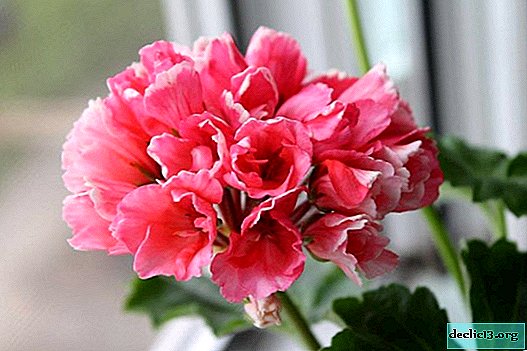
Grade Pink Chart in the form of leaves refers to the ivy species, in another way they are called shield or Ivy (from the English Ivy "ivy"). The leaves of this variety resemble maple, but their shape is more smooth pentagonal. Leaves are covered with wax coating on top, they are dense and glossy. Pelargonium pelargoniums are often mistaken for artificial pelargonium because of the leaves. The color of the leaves is bright and fresh, rich lime.
Pink Chart pelargonium stalks are thin and flexible, this is an ampelous plant, perfect for decorating balconies, arbors and hanging planters.Against the background of light green leaves, bright raspberry large flowers stand out nicely. They are so thick double that they look like small peonies. On the flip side, the “lining,” the petals are very pale. This gives the general appearance of inflorescences liveliness and overflow, due to the effect of different shades.
Pandora
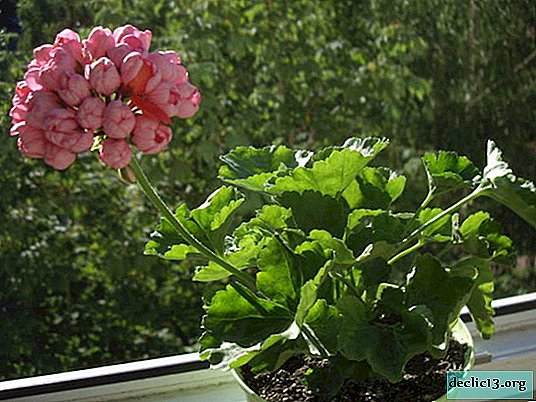
In Pink Pandora (“Pink Pandora”) the petals, on the contrary, are simple non-double. But these petals are collected in buds, like tulips, and have the shape of a glass. The general view of the inflorescence of pelargonium resembles a small, almost puppet, bouquet of miniature tulips.
The stem of the variety Pink Pandora is bushy branched. The more often you pinch it, the more it will give branches, and, consequently, inflorescences on them.The shape and type of leaves pelargonium "Pink Pandora" refers to the zonal species. Its leaves look like oyster shells: semicircular with smoothed notches. The main tone is medium green, when transferred to a cool room, a brighter middle begins, a zone of a different shade. Often, a variety gives a reaction to extreme heat, releasing red buds among pink flowers.
Pink
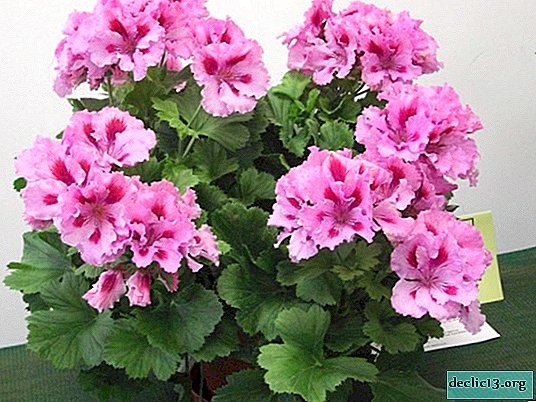
Pink Pelargonium Flowers cannot boast either the unusual shape of Pink Pandora buds or the splendor and luxurious size of the Pink Chart. But her small nondescript flowers have a stunning languid aroma of an elegant rose.
Pelargonium rosea essential oil is used by all countries, but most of all it is consumed by France - the capital of perfumery. In addition to the production of perfumes and eau de toilette, Pelargonium Rose essential oil is used in aromatherapy, food industry, and cosmetology.
The flowers of this variety are small pink with simple petals, the leaves are dark green carved, reminiscent of a fern.On the bushy branched stem, as well as on the leaves, are simple and etheric hairs containing oil glands.
Planting Instructions
Pelargoniums are southern plants, accustomed to drought and burning sun rays. Not surprisingly, they suffer most from excessive moisture and stagnation of water. Therefore, it is necessary to provide plants with good drainage and light, loose soil.
Pelargonium landing instructions:
- At the bottom of the pot, small expanded clay is poured about 2-3 cm.
- Pre-prepared soil is poured on top.
- Sprouted cuttings are planted.
- It is advisable to take a tight pot to provide abundant flowering.
- Cover with a transparent jar to maintain humidity.
Lighting, location and soil
Pelargonium is a very photophilous plant and, with a lack of lighting, ceases to produce essential oils, grows poorly, flowers bloom small, the total number of inflorescences decreases. She needs to provide sufficient lighting, exposing the plant to the south and southwest windows. The daylight of pelargonium lasts at least 16 hours, if necessary, it is extended by fitolamps and fluorescent lamps.
This southern lady loves fertile, but light soil with good drainage, because when stagnant water in the soil is immediately affected by root rot. When preparing the soil mixture for pelargonium, it is desirable to add sand and peat. She prefers neutral and alkaline soils, it is desirable to neutralize the acid reaction of the soil with lime.
How to care for a flower?
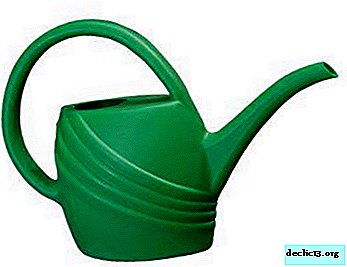 Optimal conditions for the growth and flowering of pelargonium:
Optimal conditions for the growth and flowering of pelargonium:
- Intensive sunlight (at least 16 hours).
- The abundance of heat, the most favorable temperature is 25-27 ° C.
- Dry air, humidity not more than 60%.
- Fertile light soil.
- Moderate watering once a week.
- He does not like waterlogging of the soil, especially in winter.
- Fertilized in the summer during the growing season.
- In a cramped pot, pelargoniums bloom longer.
Once a month, pelargonium is fed with mineral fertilizers with a nitrogen content.
Diseases and Pests
- For pelargonium, root and stem rot is detrimental. It manifests itself in fading leaves, while the earthen lump is sufficiently moistened. The root neck becomes soaking and soft, the shell of the roots is separated from the core, as if "peeling". It is urgent to etch the ground with antifungal drugs. A sick plant is by no means cuttings.
- The next common disease is gray rot, which affects leaves and buds. Reduce overall air humidity and reduce watering. Sick leaves and buds are removed, the plant is treated with fungicide.
- Aphids, ticks and powdery mildew can be controlled with Bordeaux fluid and insecticides.
- The defeat of pelargonium by caterpillars and whiteflies is much less common than aphids. But insecticides and a solution of potassium soda will also help here.
Propagation Features
Most often, pelargonium is propagated vegetatively:
- cuttings;
- sheet plate;
- a piece of sheet.
Leaf plate and leaf fragment
The processes are generally similar:
- A leaf with a stalk, without a stalk, with a removed central vein or triangular fragments of a leaf is taken. All cuts are made with a sharpened knife so as not to wrinkle tissue and less injure the planting material.
- To avoid infection and rot, fresh sections are treated with ash, activated carbon or a growth stimulant.
- Deepen sections in the soil and cover with a transparent jar on top until new leaves appear.
Seeds
Vegetative propagation of pelargonium is more reliable and preserves the varietal characteristics of the plant, but you can not do without seeds to obtain hybrids or to deliver the coveted variety by mail.- Seeds are poured onto prepared soil without sprinkling with soil.
- Cover the top with glass to maintain moisture and wait a month until emergence.
Cuttings
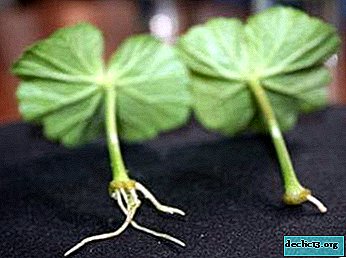 For productive propagation by cuttings, the uterine plant is intensely fed and given additional illumination for a month or two.
For productive propagation by cuttings, the uterine plant is intensely fed and given additional illumination for a month or two.- Then, after the appearance of a sufficient number of new branches with leaf buds, cuttings are cut with a sharp knife. Not necessarily they should be from the top of the branch, it is possible from the middle, but on each handle there should be 2-3 leaf buds.
- Cuttings are either placed in water until the roots appear, or, treated with a growth stimulant, immediately planted in the soil.
Although the process of successful propagation of pelargonium by seeds is lower than that of the vegetative method, nevertheless, the resulting plants are distinguished by more lush and abundant flowering.
Pelargonium varieties of Pink - female flowers. Giving a pink Pelargonium flower to a girl or lady, you emphasize her feminine character, tenderness and romance.

 For productive propagation by cuttings, the uterine plant is intensely fed and given additional illumination for a month or two.
For productive propagation by cuttings, the uterine plant is intensely fed and given additional illumination for a month or two.
